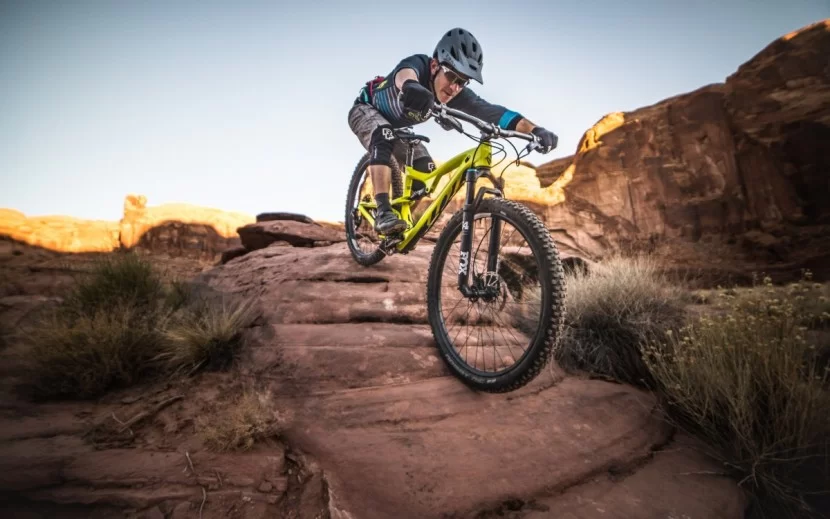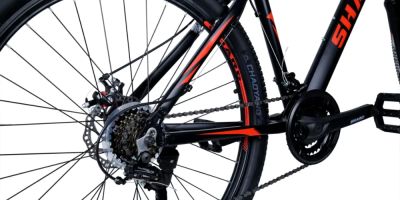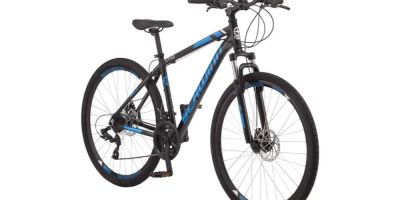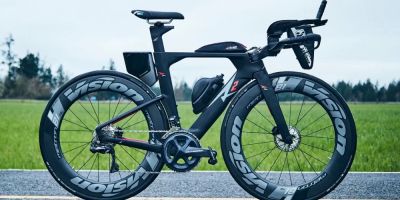
Choosing the Perfect Mountain Bike for Your Adventure
When I first started mountain biking, I was overwhelmed by the sheer number of options available. From lightweight trail bikes to rugged enduro machines, the choices seemed endless. It wasn’t until I spent some time researching and testing different models that I truly understood how to choose the right bike for my needs. In this article, I’ll share everything I’ve learned about selecting a mountain bike—whether you’re a beginner or an experienced rider looking to upgrade your gear.

Conte's Bike Shop
3449 Wilson Blvd, Arlington, VA 22201, USA
1. Understanding Your Riding Style
Before diving into the specifics of bike features, it’s important to define what kind of mountain biking you’ll be doing. Are you planning on tackling steep mountain trails, or do you prefer cross-country rides that focus on speed and endurance? Your riding style plays a huge role in determining which type of bike is best suited for you.
I remember when I first got into mountain biking, I was drawn to all the exciting, downhill-focused bikes with large tires and full suspension. However, after a few months of riding, I realized that my real interest lay in cross-country (XC) riding, where I focused more on speed and longer distances. The bike I initially purchased, although great for technical descents, was too heavy and sluggish for my preferred style of riding.
In general, here are a few key riding styles and the types of bikes that match each one:
- Cross-Country (XC) Bikes: Lightweight and designed for speed and endurance, perfect for smooth trails and long rides.
- Trail Bikes: Versatile bikes that can handle a mix of terrain, ideal for riders who enjoy moderate technical challenges.
- Enduro Bikes: Built for rough terrain, featuring more suspension travel for steep, technical descents.
- Downhill Bikes: Designed for extreme descents and rocky trails, with heavy-duty suspension systems and reinforced frames.
2. Choosing the Right Frame Material
Once you’ve identified your riding style, the next step in choosing a mountain bike is selecting the right frame material. Frame material impacts not only the bike’s weight but also its durability, ride quality, and cost.
When I was upgrading my bike, I opted for a carbon fiber frame, mostly because I was looking for something that was lightweight yet strong. However, each material has its pros and cons, and depending on your budget and needs, you might want to choose a different option:
- Aluminum: Lightweight, strong, and generally less expensive than carbon fiber. Aluminum frames are commonly used in all types of mountain bikes, offering a good balance of performance and value.
- Carbon Fiber: Extremely light and stiff, offering superior performance, especially for competitive riders. However, carbon fiber bikes tend to be pricier and may not be the best choice if you’re just starting out.
- Steel: While not as lightweight as aluminum or carbon, steel frames are incredibly durable and offer a smoother ride due to their natural shock-absorbing properties. They’re ideal for riders who prioritize comfort over speed.
3. Suspension: Full vs. Hardtail
The next big decision when choosing a mountain bike is the suspension. Suspension plays a crucial role in how the bike handles different types of terrain, and there are two main types: hardtail and full suspension.
I learned the hard way that choosing the right suspension can significantly impact your riding experience. When I first started, I didn’t fully understand the difference, so I ended up with a hardtail bike that wasn’t as comfortable on technical terrain as I had hoped. Here's a breakdown of the two options:
- Hardtail Bikes: These bikes have suspension only in the front fork, which makes them lighter and more efficient for smoother trails. Hardtails are a great option for cross-country riders who focus on speed and need a bike that’s easy to handle.
- Full Suspension Bikes: These bikes have both front and rear suspension, making them ideal for rough trails and technical descents. They absorb shocks better, providing a smoother ride on bumpy, uneven terrain. If you're into trail riding or enduro racing, a full-suspension bike is usually the better choice.
4. Understanding Gear and Drivetrain
Another key feature to consider when choosing a mountain bike is the gear system, or drivetrain. This system determines how you shift gears to handle different terrain, and it plays a huge role in overall bike performance.
When I first started mountain biking, I didn’t fully appreciate the importance of a good drivetrain. I quickly realized that the gear system on my bike was holding me back, especially when riding up steep hills or through muddy trails. I upgraded to a bike with a 1x drivetrain, which simplified shifting and offered smoother transitions between gears.
Here’s a quick guide to understanding the two most common drivetrain setups:
- 1x Drivetrain: A single chainring in the front and a wide-range cassette in the rear. This setup simplifies shifting and is perfect for riders who want fewer components and easier maintenance.
- 2x and 3x Drivetrains: Multiple chainrings in the front, offering a broader range of gears for tackling steep climbs and fast descents. These are great for riders who need versatility in their gearing but come with more parts to maintain.
5. Wheel Size and Tires
Another important factor to consider is the wheel size. The right wheel size will affect the bike’s handling, speed, and ability to navigate rough terrain.
I initially stuck with the standard 26-inch wheels on my mountain bike, but after trying out a 29-inch bike on a steep trail, I could immediately feel the difference. Larger wheels provide better traction and roll over obstacles more easily, but they can be harder to maneuver in tight spaces. Here's a guide to the most common mountain bike wheel sizes:
- 26-Inch Wheels: The traditional mountain bike wheel size, offering agility and quick handling. However, they don’t provide the best stability on rough terrain.
- 27.5-Inch Wheels: A compromise between agility and stability, these wheels are ideal for trail riding and offer a smooth ride while maintaining control on technical terrain.
- 29-Inch Wheels: The largest option, providing excellent speed and stability, especially on long trails and uneven terrain. However, they can be less agile in tight, twisty sections.
6. Brakes: Disc vs. Rim
The braking system on your mountain bike is essential for safety and control, especially when you’re riding downhill or on technical trails. Most modern mountain bikes come with disc brakes, but there are two main types to choose from:
- Mechanical Disc Brakes: These are cable-operated and tend to be less expensive. They’re reliable and easy to maintain but may not perform as well in wet conditions.
- Hydraulic Disc Brakes: These are operated by hydraulic fluid and provide better stopping power with less maintenance. They’re ideal for riders who frequently encounter muddy or wet conditions.










